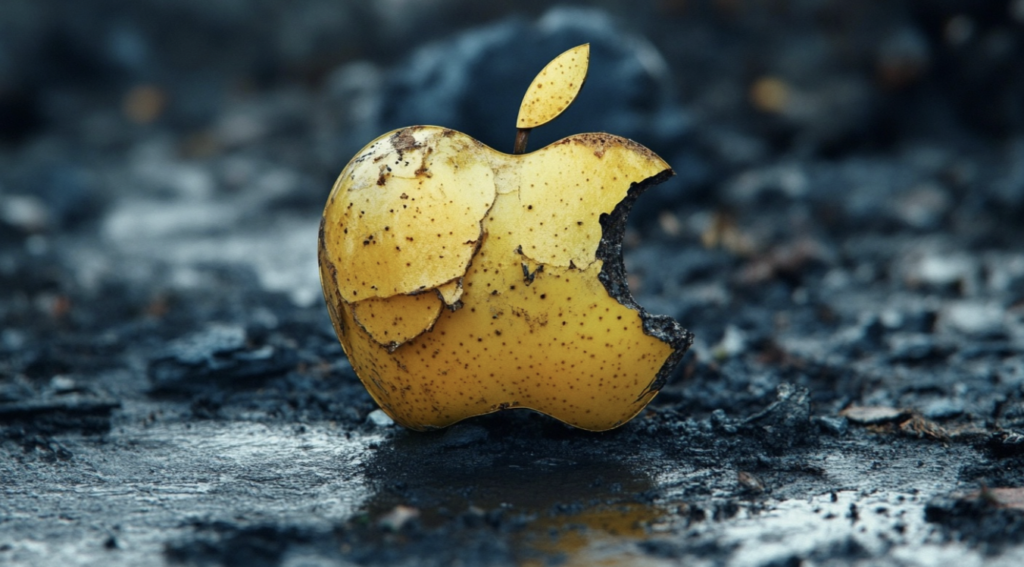… and it would be Amazing!

(Listen to Steve read this post below)
Let’s not sugarcoat this — Apple is so far behind in the generative AI race it’s not even funny. I’d almost say they’re Kodak-ing themselves. Remember Kodak? They had the tech for digital cameras and just… ignored it. Apple’s walking a similar tightrope with AI, and the rope’s getting thinner by the day.Subscribed
Yes, they announced big things in 2024 with “Apple Intelligence” — their shiny new AI initiative. But let’s be real: that was all hype, zero delivery. There’s no rubber on the Apple AI road at all. Nothing of substance has landed in our hands. The keynote buzz has fizzled, and we’re left wondering what — if anything — is actually coming.
And then there’s Siri, Apple’s supposed digital assistant. Honestly? Siri is the modern-day Clippy — a sad, awkward relic trying to be helpful but just getting in the way. It can barely string together a useful sentence, can’t read web pages, can’t pull news summaries, and still gives responses like:
Q: “What’s the capital of Thailand?”
Siri: “The capital of Thailand is T.Really? Come on.
But let’s zoom out a little. Where is this all going?
In the next 12–24 months, we’re going to see personal AIs become a reality. I’m talking about AI systems that truly know us — not just chatbot-level assistants, but hyper-intelligent agents that live across our digital ecosystems: phones, laptops, cloud storage, email, social media, calendars, files, photos, phone calls — everything.
These AIs will:
- Tap into our digital memories — what we’ve said, written, created, posted, liked.
- Understand our patterns, preferences, and personalities.
- Help us write, plan, ideate, recall — even anticipate what we’ll need before we ask.
- Manage our finances, track our health, optimize our time.
And here’s where it gets wild: they could even generate live video avatars of us — perfectly mimicking our faces and voices — to appear on calls, in meetings, or in content on our behalf. We’ll effectively be able to be in many places at once. AI versions of us, showing up, speaking, presenting, doing — while we sleep or focus elsewhere. That’s the level we’re headed toward.
It won’t just be “Ask AI.” It will be:
“Hey, find that idea I had about a product in 2019, connect it to that presentation I shared with Jess last week, and create a mock pitch deck.”
“Also, present it in a Zoom meeting as me, using my voice and expressions.”
And here’s the kicker: Apple is the one company that could actually nail this.
Apple have captured our digital lives: our devices, our photos, our messages, our purchases, our iCloud backups. They have the security architecture and the privacy reputation to do this right. If they built a truly personal LLM — an on-device AI model trained on your data and your history — that could be the most valuable, trusted AI in the world.
Imagine the power of GPT-4, but it knows you. And it’s running locally, securely, privately, on your iPhone and Mac. That’s the future. And that’s what Apple should do.
But if they don’t move fast — really fast — they risk becoming irrelevant in this next wave. Just another hardware company. A luxury phone-maker. A spectator while the likes of OpenAI, Google, Amazon and Meta reinvent the user experience.
Let’s also not forget: Apple has over $160 billion in cash reserves. They have every resource available to them. The engineering talent. The brand loyalty. The user base. The opportunity. And yet — nothing.
It’s worth remembering that no company is untouchable. The mighty do fall. And if Apple doesn’t get serious about building the AI future — not just reacting to it — they might just watch their empire erode while others shape what comes next.
Keep thinking,
Steve.